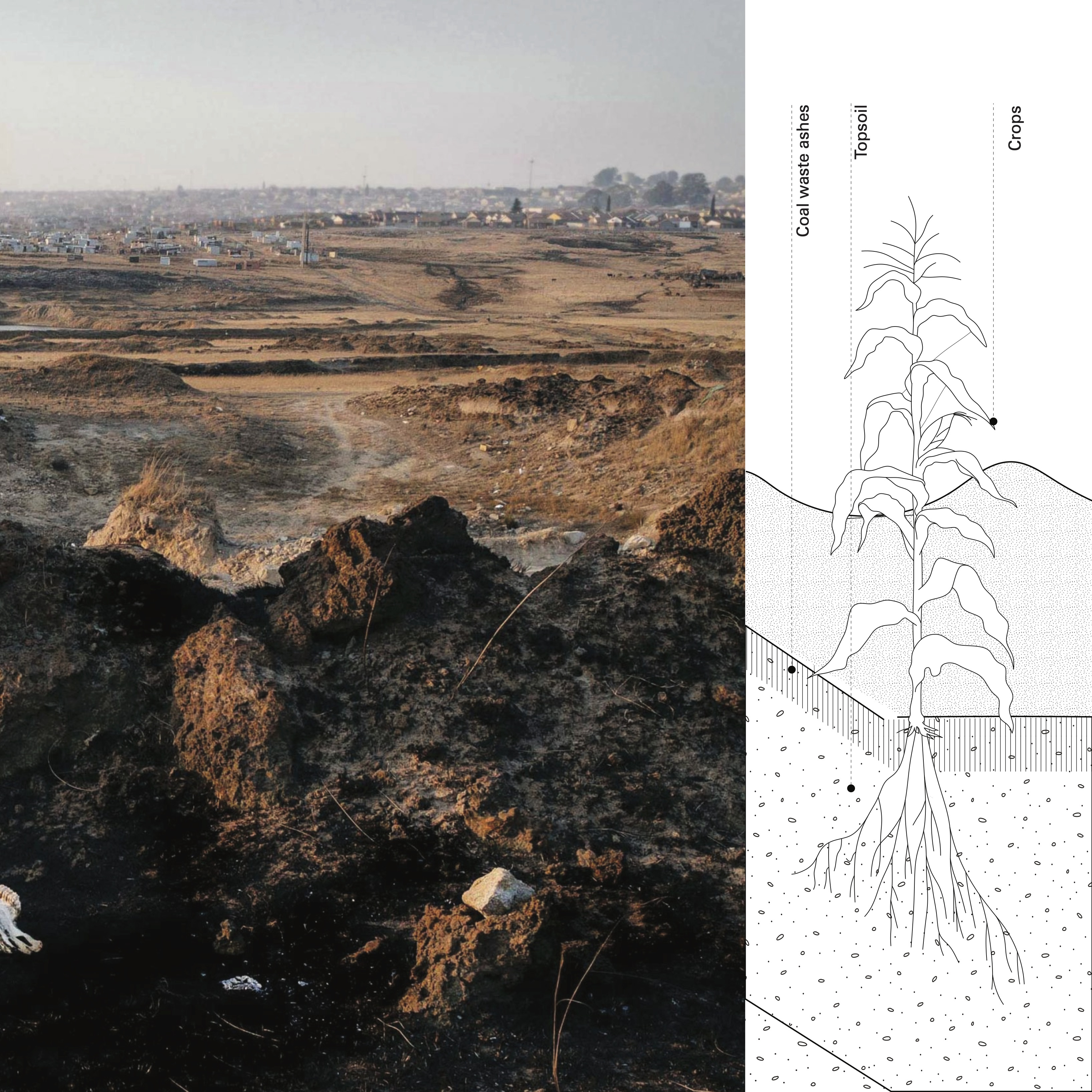Fab-Soil
“
Growth of plants at 90 days – comparing control on native soil with Fab-Soil made by mixing coal waste with native soil with specified amendments.”
As the rest of the world moves away from coal, South Africa continues to depend heavily on coal as a source of economic value, employment, and energy.1 Coal waste deposits occupy and disturb large areas, affecting topography and polluting the soil.
The Center for Bioprocess Engineering at the University of Cape Town in South Africa has developed a new strategy for soil restoration, using fine coal waste as the main component of an artificially developed substrate, a layer of soil critical for the establishment of plant cover and root development.2
The process consists of collecting fine coal waste and native topsoil from a colliery in the eMalahleni mining site, and mixing them in different ratios. The coal waste is characterized by ultrafine low sulfur tailings obtained from a two-stage desulphurization process.3
The most common strategy for coal waste management is to cover the waste with different layers of new soil in an attempt to reduce water and wind erosion. The proposed waste mixture, named Fab-Soil, or Fabricated soil, results in a technosol capable of adequately promoting plant growth. It is a potential resource to accelerate revegetation in mining sites reducing or even eliminating the amount of topsoil used in land restoration in a South African context.
![]() Image source:
Amaral Filho et al., “On the Feasibility of South African Coal Waste for Production of ‘FabSoil’, a Technosol.”
Image source:
Amaral Filho et al., “On the Feasibility of South African Coal Waste for Production of ‘FabSoil’, a Technosol.”
References
1. Statistics South Africa, “The Importance of Coal | Statistics South Africa,” accessed March 6, 2022, http://www.statssa.gov.za/?p=4820.
2. Juarez R. Amaral Filho et al., “On the Feasibility of South African Coal Waste for Production of ‘FabSoil’, a Technosol,” Minerals Engineering 146 (January 15, 2020): 106059, https://doi.org/10.1016/j.mineng.2019.106059.
3. Process of removing sulfur from coal waste.
1. Statistics South Africa, “The Importance of Coal | Statistics South Africa,” accessed March 6, 2022, http://www.statssa.gov.za/?p=4820.
2. Juarez R. Amaral Filho et al., “On the Feasibility of South African Coal Waste for Production of ‘FabSoil’, a Technosol,” Minerals Engineering 146 (January 15, 2020): 106059, https://doi.org/10.1016/j.mineng.2019.106059.
3. Process of removing sulfur from coal waste.
 Image source:
Image source: